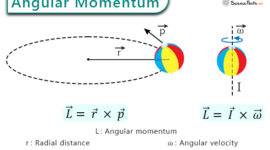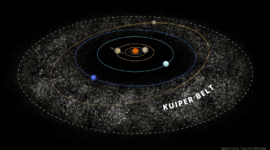Artemis II is poised to be a landmark mission, marking the first time in over 50 years that humans will journey to the vicinity of the Moon. As the first crewed flight of NASA’s Artemis program, its primary purpose is to test the capabilities of the Space Launch System (SLS) rocket and the Orion spacecraft with a human crew on board, paving the way for future lunar landings. The mission is a critical stepping stone toward establishing a long-term human presence on and around the Moon, and eventually, a journey to Mars.
The proposed launch date for the Artemis II mission is currently no earlier than April 2026. While there have been reports and discussions about the possibility of an earlier launch, potentially as soon as February 2026, NASA’s official mission page still lists April 2026 as the target. The mission has experienced several delays from its initial target dates due to the need to resolve technical issues with the Orion spacecraft, specifically regarding the heat shield, battery, and life support systems.
Mission Objectives and Timeline
Artemis II is a complex, approximately 10-day mission with a clear set of objectives. It will launch from Launch Complex 39B at NASA’s Kennedy Space Center in Florida, carrying a crew of four astronauts on a free-return trajectory around the Moon. This trajectory is a fuel-efficient path that uses the Moon’s gravity to slingshot the spacecraft back to Earth without the need for additional propulsion, making it a crucial safety feature for the crewed test flight.
The mission profile includes several key phases:
- Launch and Earth Orbit: After liftoff, the SLS rocket will place the Orion spacecraft and its crew into a highly elliptical Earth orbit. The crew will spend approximately two days in this orbit, performing extensive checkouts of the spacecraft’s life support systems and other critical functions. They will also conduct a rendezvous and proximity operations demonstration, using the spent Interim Cryogenic Propulsion Stage (ICPS) as a target to simulate docking procedures for future missions.
- Translunar Injection (TLI): Following the systems checks, Orion’s European-built Service Module will perform a translunar injection burn, propelling the spacecraft out of Earth’s orbit and onto a course for the Moon.
- Lunar Flyby and Return: The journey to the Moon will take about four days. At its closest approach, Orion will fly approximately 4,600 miles (7,400 kilometers) from the lunar surface. The spacecraft will then use the Moon’s gravity to initiate its free-return trajectory back toward Earth. The crew will fly farther than any humans have flown from Earth since the Apollo 13 mission in 1970.
- Re-entry and Splashdown: The mission will conclude with Orion re-entering Earth’s atmosphere at high speed and splashing down in the Pacific Ocean, where recovery teams will be waiting to retrieve the crew and the spacecraft.
The Crew
The Artemis II crew is a diverse and highly experienced team of astronauts, representing a significant milestone in international space collaboration. The crew consists of:
- Reid Wiseman (Commander): A U.S. Navy aviator and test pilot, Wiseman previously served as a flight engineer on the International Space Station (ISS) for Expedition 41.
- Victor Glover (Pilot): A U.S. Navy aviator, Glover was the pilot of the first operational flight of SpaceX’s Crew Dragon spacecraft, Crew-1. He will be the first Black astronaut to fly around the Moon.
- Christina Koch (Mission Specialist): Koch is a NASA astronaut who holds the record for the longest single spaceflight by a woman, spending 328 days on the ISS.
- Jeremy Hansen (Mission Specialist): A Canadian Space Agency (CSA) astronaut, Hansen will be the first Canadian to venture to deep space.
The crew’s extensive training and unique backgrounds in military aviation, spaceflight, and engineering will be invaluable for a mission focused on testing and validating a new generation of deep-space hardware.
Launch Vehicle and Spacecraft
The Artemis II mission relies on two main components:
- Space Launch System (SLS): The SLS is a super heavy-lift launch vehicle, designed to be one of the most powerful rockets ever built. The Block 1 variant, used for Artemis II, is taller than the Statue of Liberty and generates 8.8 million pounds of thrust at liftoff. It consists of a core stage, two solid rocket boosters, and an Interim Cryogenic Propulsion Stage (ICPS) that provides the final push to send Orion toward the Moon.
- Orion Spacecraft: Orion is the crew-carrying vehicle for the Artemis program. It is made up of three main components:
- Crew Module: The pressurized capsule where the astronauts will live and work.
- Launch Abort System: A critical safety system designed to pull the crew module away from the rocket in the event of an emergency during launch.
- European Service Module (ESM): Built by the European Space Agency (ESA), the ESM is the “heart” of the spacecraft, providing essential functions such as propulsion, electrical power from its solar arrays, and the life support systems including oxygen and water.
Legacy and Future Implications
Artemis II is more than just a test flight; it’s a bridge between the uncrewed success of Artemis I and the lunar landing planned for Artemis III. By putting a human crew at the controls of the SLS and Orion in a deep-space environment, the mission will provide critical data on spacecraft performance, radiation exposure, and human endurance. The experience gained will be crucial for the development of future missions, including the establishment of the Lunar Gateway—a small space station that will orbit the Moon—and ultimately, a sustained human presence on the lunar surface. The Artemis program, with Artemis II at its forefront, represents a new era of human space exploration, a return to the Moon, and a bold step toward the next great frontier: Mars.




